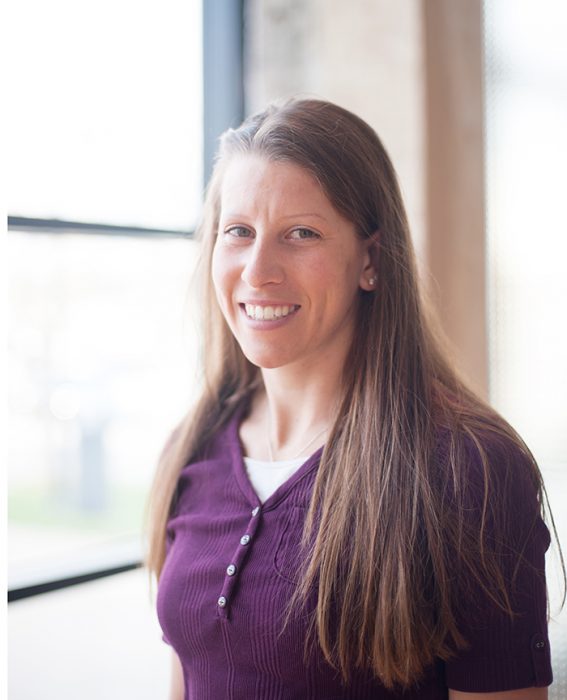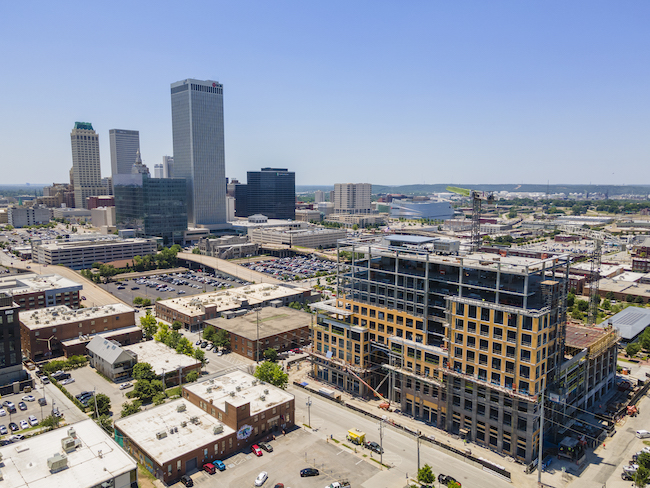When it comes to architecture, engineering, and construction (AEC), the “architectural design” and “physical construction” parts are pretty easy to wrap your head around.
But engineering? What exactly does that mean?
From civil and structural engineering to surveying to roof consulting, there are a lot of specializations within the AEC industry that are often overlooked or that the general public knows very little about.
In 2022, we’re bringing you a behind-the-scenes look into some of the nuanced aspects of the AEC industry. This series is designed to give those interested in AEC – especially students – a peek into Wallace Design Collective’s different consulting services and some of the specialized parts and pieces that tie architecture and construction together.
This week, we get a closer look into structural engineering with one of Wallace Design Collective’s newest principals, Dan Popp, PE, SE. Dan channeled his early fascination with construction sites into a fulfilling structural engineering career that has taken him from Chicago to Honolulu and given him opportunities to design everything from high-rise buildings to earthquake-resistant structures (sometimes both combined!). Read on to hear what he has to say about structural engineering – his favorite aspect, memorable projects, a common misconception, and more:
1. In your own words, how would you sum up the basics of what a structural engineer does and why it’s important?
I often half-jokingly tell people my job is to “make buildings not fall down.” Our job is to creatively and collaboratively design the “bones” of a building to resist gravity, wind, earthquakes, and other loads. We work closely with architects and the engineers designing the other systems in the building, such as heating and cooling, plumbing, and electrical.
2. What drew you to structural engineering? Alternatively, what’s your favorite thing or the most fun/unique aspect of your job?
I spent my childhood touring building sites unofficially and have always been interested in construction. The best parts of my job are solving problems and visiting job sites—and these days, I get to do that without fear of arrest.
3. What type of project do you enjoy the most, or what’s the most memorable/interesting project you’ve worked on?
I’ve been fortunate to work on quite a few tall buildings—the thrill of standing on top of something you designed never gets old. Though it’s far from the tallest or largest building I’ve done, one of my favorite projects has been the 222 North Detroit building, which was built across the street from our office in downtown Tulsa, Oklahoma. I was able to watch from my desk as it was built. In fact, I realized as I designed the foundation for the 230-foot tall tower crane that the base of the crane was only 180 feet from my desk.
4. What misconceptions do you think other people have about what you do? Or maybe even misconceptions you had about this field before getting real-world experience?
Quite a few people seem to think that buildings are designed only by architects. Architects work with a large team of talented professionals including the structural engineers. The best architects recognize the importance of structural engineering and involve them in early design decisions.
5. How does where you are now compare to where you thought you would end up when you were in school? Any twists or turns that brought you here?
My career path has been rather random—Honolulu, Chicago, Tulsa. Each place has given me many opportunities: Honolulu, the experience with tall buildings, high seismic, and high wind; Chicago, access to a community of world-class architects and structural engineers; and Tulsa, the ability to become an owner at a leading firm and do work nationwide.
6. What types of people do you think are well suited for structural engineering?
If you like buildings, math, and creative problem solving, structural engineering offers a great career. The best thing about the architecture and engineering community is the people—with rare exceptions they are extremely competent, trustworthy, and friendly.
7. There’s nothing like real-world experience to bring some perspective. What advice would you give current students or individuals who might be considering this as a career?
Get out in the field—visit job sites. Learn how things get built. Find ways to work in design offices, even if just for a few weeks between semesters. Take every opportunity to meet and learn from those who are a few years ahead of you.
Are you a student who’s interested in architecture/engineering/construction (AEC) but not sure exactly what it entails, or which part of it might be right for you? Follow our series to get an in-depth look into structural and civil engineering, surveying, roof consulting, forensics, landscape architecture and more from some of Wallace Design Collective’s top professionals.
Additionally, you can check out some of the real-life work experiences of our 2021 summer interns here.



There are no comments.